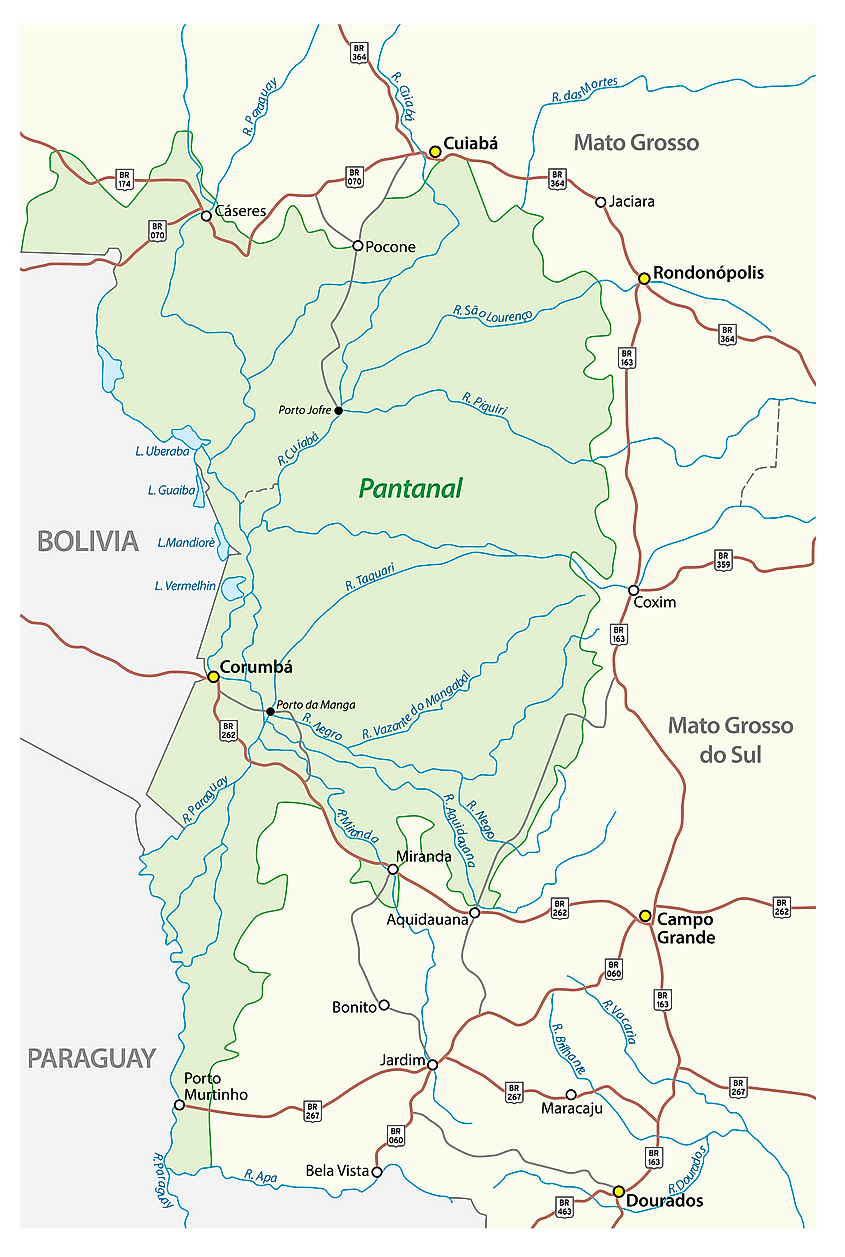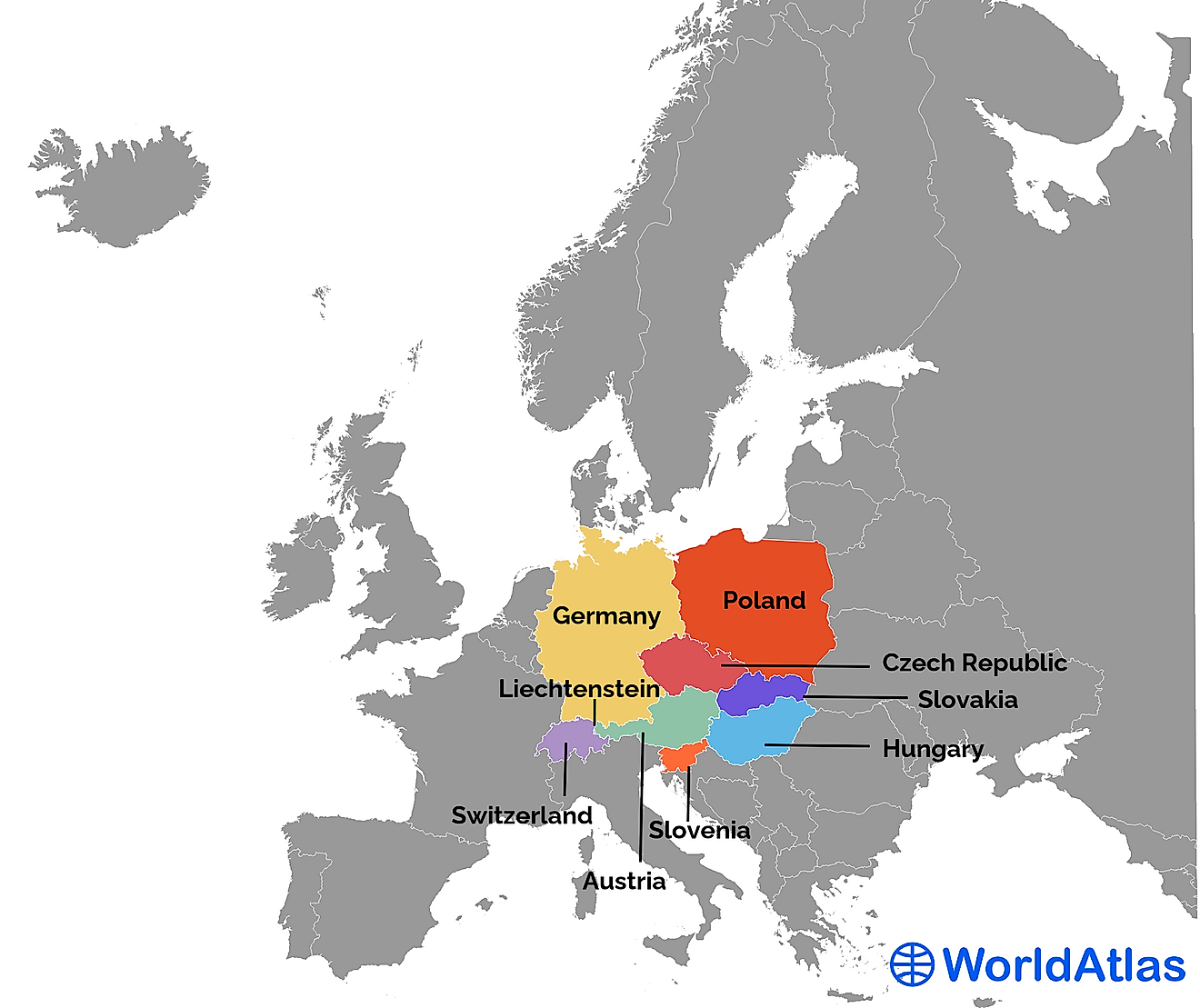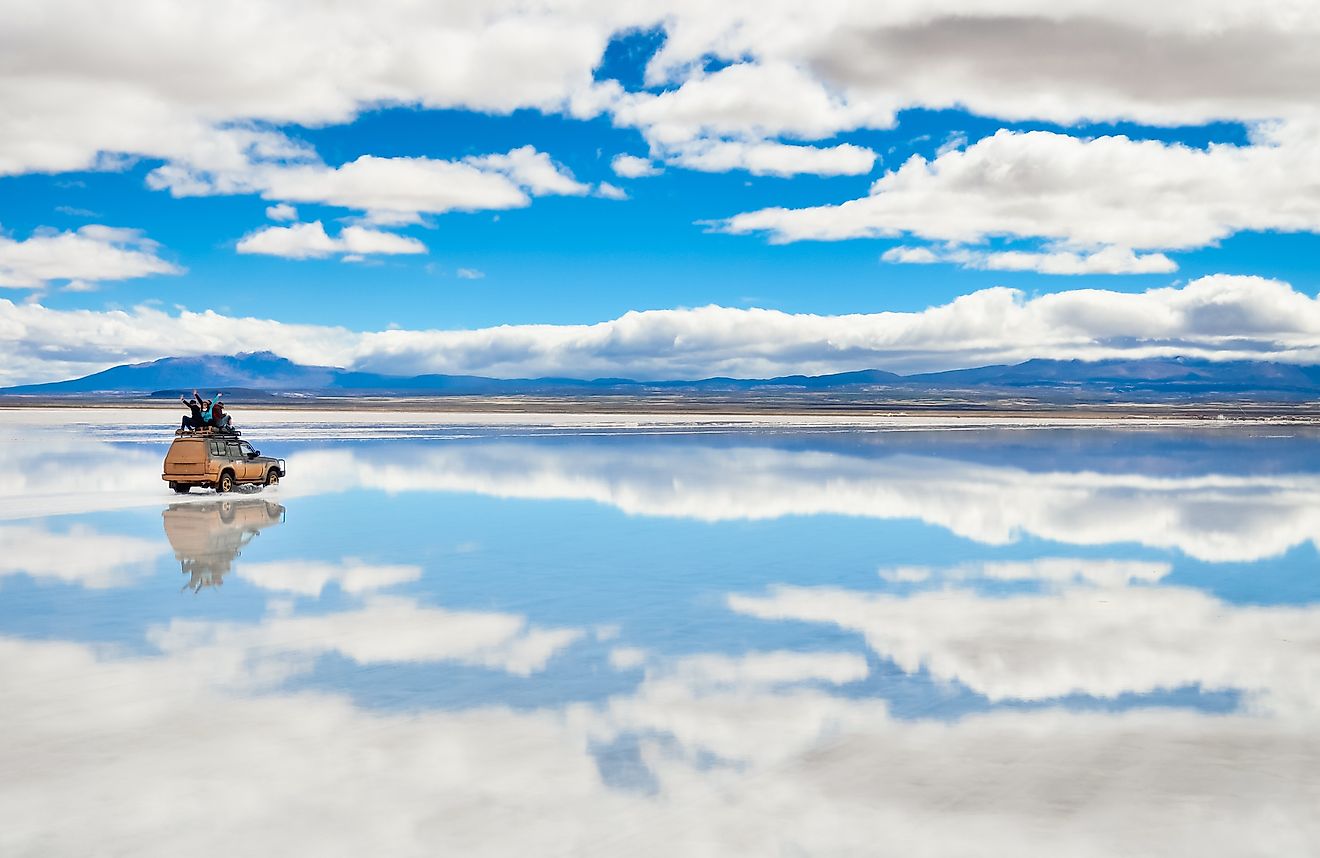Pantanal, Brazil

- The area of the Pantanal is the largest tropical wetland on Earth.
- During the wettest part of the year, when the area experiences the most precipitation, the Pantanal wetland and basin can be as much as 80% submerged in water.
- The Pantal is home to 9,000 invertebrate species, 159 mammal species, 53 types of amphibians, 480 reptile species, 400 fish species and some 1000 different types of birds.
The area of Pantanal, Brazil, is the largest tropical wetland on Earth. It measures roughly 50 - 75,000 square miles, and covers much of Brazil, as well as eastern Paraguay, and Bolivia. As it is situated in a natural basin, the Pantanal is a natural wetland that retains large amounts of water, while the surrounding higher elevation areas are dry forests, savannas and arid plains.

Contents:
- How Was The Pantanal Formed?
- Geography Of The Pantanal
- Why Is The Pantanal Important?
- What Lives Within The Pantanal?
- Conservation Efforts
How Was The Pantanal Formed?

The Pantanal is a natural lowland, which takes the shape of a shallow bowl, or basin. In the same way that a depression would collect water, this basin forms a wetland as rain and water is retained within the lowland areas. In the case of the Pantanal, much of the water comes from the Paraguay river and similar waterways, as well as natural rainfall. Precipitation in the area accounts for roughly 40 to 50 inches of water per year.
Like most areas in South America, the landscape and environment change with the seasons. Brazil tends to have wet and dry seasons, rather than warm and cold seasons, and this change in precipitation results in a drastic difference in the landscape and appearance of the Pantanal from season to season. During the wettest part of the year, when the area experiences the most precipitation, the Pantanal wetland and basin can be as much as 80% submerged in water. At these times, the basin is extremely swampy and marsh-like, almost like a giant pond.

Conversely, during the dry season much of the water in the basin drains off into the Paraguay River. As the runoff drains, what is left behind consists of pockets of water and wetlands, much like a series of pools or lakes. These are often full of small fish and other shellfish which become trapped within the pools as the water recedes. A large number of birds and other land dwelling creatures use these pools as a food source, feeding on the fish and wildlife within the small ponds.
Geography Of The Pantanal

The Pantanal lowlands can be categorized into the wetland category, although the bordering areas consist mainly of grasslands and tropical forests. During the wet season, when these surrounding areas are also flooded, the Pantanal reaches such a size that it becomes the largest wetland in recorded history.
The Paraguay River, which provides a major source of water to the wetlands, runs directly through the Pantanal, and the banks and surrounding edges of the river experience the greatest change in water level. The water depth can change in this region from roughly 6 feet to as deep as 16.5 feet of water in the wettest seasons. When the water levels are high, the Pantanal is flooded, causing the water to slow. The higher the water levels get, the slower it moves, as the paths become impeded by vegetation and the large amounts of plant growth within the basin.

The Pantanal wetlands reside within a basin which is only 260 - 490 feet above sea level. Its low elevation means that the soil in this area is particularly sandy, and consists mainly of silt, sediment, clay or pure sand, being sandier at higher elevation and more clay or mud like in the lower and therefore wetter areas. The increased water levels, as well as deposits from rivers and waterways add to the amounts of silt and clay in the lowest lying areas of the marsh.
Why Is The Pantanal Important?

The Brazilian Pantanal is home to a large variety of plants and animals. Because of this, it is an extremely biodiverse area, and rich in wildlife. The Pantanal is also an uncommon landscape that is not found in many places on Earth. The changes within the natural water flow in the basin, and the temporary pools which are created, form an unusual environment where distinct plants and animals can thrive. Because the Pantanal is such a unique environment, four different areas, the Penha, the Pantanal Matogrossense National Park, the Doroche, and the Special Reserves of Acurizal, all of which are within the Pantanal, have been classified as UNESCO World Heritage Sites. These regions include more than 180,000 hectares of land.
What Lives Within The Pantanal?
The Pantanal is a highly diverse ecosystem. It has a large number of different plants and animals which call this marshy basin home. These native animals include over 9,000 invertebrate species, including 159 mammal species, as well as 53 types of amphibians, 480 reptile species, 400 fish species and some 1000 different types of birds. In terms of flora, the Pantanal is also rich and diverse. There have been more than 3,500 different varieties of plants recorded within the Pantanal.

There are also a variety of animals in the area that are classified as threatened, at risk, or endangered. The maned wolf, once common across South America, is one such species which resides in the Pantanal. This fox-like creature is the largest canid in South America, and has become extremely rare in the wild due to habitat loss and poaching. The world’s largest rodents, the capybaras, also find refuge within the protected regions of the Pantanal. These unique animals look much like guinea pigs but can grow up to 175 pounds in size. Like many other threatened species, they have been dying off due to loss of habitat or fragmentation of their homelands.

Jaguars once covered much if not all of central and south america, but now their numbers have become so few that they are difficult to spot in the wild. The sheltered regions of the Pantanal and surrounding areas provide safe haven for the majestic creatures. Other endangered animals which live within these wetlands include the Hyacinth Macaw, a variety of large parrot, and the Jabiru stork, a marsh-dwelling bird that thrives in the expansive marshes. The region’s status as a World Heritage Site area intends to help protect these rare species and encourage conservation of the naturally diverse ecosystems in the area.
Conservation Efforts
As mentioned, parts of the Pantanal have been given UNESCO World Heritage Site status, and this has helped to protect the natural landscape as well as the plants and animals that reside within it. The unusual level of biodiversity in the Pantanal has made it a point of interest for conservationists and researchers alike. However, not all of the Pantanal is protected, leaving it open to threat or harm. Development and agricultural efforts pose a constant threat within Brazil as well as the other areas in which the Pantanal lies. Without strict government protection, it is possible that these areas may become lost, or their delicate ecosystems threatened.

Deforestation poses the largest threat, and wide scale cutting and planting efforts have seen huge areas in these countries wiped out and cleared for agricultural use - especially as grazing pastures for cattle. Not only do the livestock eat much of the natural plants, but large areas are cleared in order for them to have expansive pastures and living quarters. Additionally, chemicals, experiments and byproducts of the cattle industry produce harmful contaminants that can have devastating effects on soil, plants and waterways.

Similarly, soybean, sugarcane and eucalyptus monocultures are being planted with increasing regularity, completely undermining the natural diversity found in these regions. Pesticides and fertilizers are not only harmful to the area in which they are used, but they often spread due to wind and water run-off, contaminating much of the surrounding areas, rivers and wetlands like the Pantanal. These single-type plantings are susceptible to disease, and can completely sap all the nutrients out of the soil after repeated plantings. This leaves the areas open to erosion and eventually results in barren wastelands where natural plants are not able to regrow.
Organizations such as UNESCO as well as the World Wildlife Fund have been working to protect as much of this delicate ecosystem as possible. Public awareness efforts are a huge part of this, as well as regulating land ownership and use, and restricting mass agriculture in the area. Mass efforts, specifically in Paraguay and Brazil, have been put in motion to try and protect this unique and thriving wetland, in order to ensure its beauty and diversity remain intact and unspoilt.











